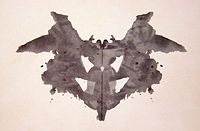
Photo from wikipedia
Authors’ Response: We thank Pettitt et al. (10) for their comments regarding our review on the different methods for calculating critical power (CP) and W ’. The main criticism from… Click to show full abstract
Authors’ Response: We thank Pettitt et al. (10) for their comments regarding our review on the different methods for calculating critical power (CP) and W ’. The main criticism from Pettitt et al. (10) reflects on our conclusion that the 3-minute all-out test (3MT) should be interpreted with “a degree of caution” (8). We agree that W 0 exhibits a large variability irrespective of the method used to determine this parameter, although this may be reduced in certain testing conditions (12). We also appreciate that several studies have reported a good agreement between 3MT and the “Gold Standard” approach for both CP and W ’. Crucially, however, others have reported that the 3MTmay overestimate CP (4). This seems to occur primarily as fitness levels increase (1), in turn affecting the predictions of time-trial performance (9). The 3MTmay be able to differentiate the upper boundary of steady-state exercise (see, e.g., Ref. 5). However, other studies have shown that during exercise at 3MT-determined CP, physiological responses may not reach a steady state (3). Furthermore, exercise at CP can typically be sustained in excess of 20 minutes, but when CP is determined from the 3MT, task failure has been shown to occur after ;12.5 minutes (2). Pettitt et al. (10) questioned whether the attainment of maximum oxygen uptake (V_ O2max) should be implemented as a test criterion for the 3MTas the test benefits from being a time-efficient test (as opposed to the more time-consuming conventional approach). We acknowledge that verifying V_ O2max may compromise the strength of this aspect of the 3MT. However, if the option is available, we encourage a V_ O2max attainment verification. Pettitt et al. (10) highlighted that a verification bout after the ramp test may be required to determine a “true” V_ O2max (11), so the attainment of V_ O2max during the 3MT can be confirmed. However, as V_ O2 should theoretically reach V_ O2max during the 3MT ((5,13,14)), it is plausible to use the 3MT as the verification bout. In summary, we do not advocate that the 3MT should not be used. Indeed, the test offers a time-saving alternative to estimate CP and W 0 where other protocols may be cumbersome (6,7). However, reflecting on the strengths and also on the limitations of the 3MT, we would like to uphold our conclusion that the 3MTshould be interpreted with a degree of caution, particularly in elite athletes. DANIEL MUNIZ-PUMARES BETTINA KARSTEN CHRISTOPH TRISKA MARK GLAISTER School of Life and Medical Sciences, University of Hertfordshire, Hatfield, United Kingdom Department of Exercise and Sport Science, LUNEX International University of Health, Exercise and Sports, Differdingen, Luxemburg Centre for Sport Science and University Sports, University of Vienna, Vienna, Austria Austrian Institute of Sports Medicine, Vienna, Austria Faculty of Sport, Health and Applied Science, St Mary’s University, Twickenham, United Kingdom
Journal Title: Journal of Strength and Conditioning Research
Year Published: 2019
Link to full text (if available)
Share on Social Media: Sign Up to like & get
recommendations!